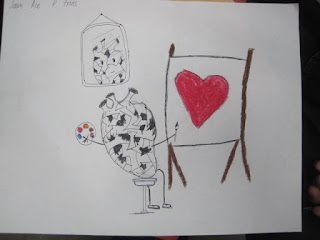2016年4月29日金曜日
2016年4月28日木曜日
Family
Family
From three sociological perspectives
Functionalist View
The family serves six functions for society:
Reproduction
Protection
Socialization
Regulation of sexual behavior
Affection
Providing of social status
Matrilocal residence: The married couple lives with or near the wife’s parents
Bilocal residence : The married couple lives with or near the husband’s or the wife’s parents
Avunculocal residence : Both son and daughter normally leave, but the son and his wife settle with or near his mother’s brother.
Neolocal residence : Husband and wife live apart from relatives of either spouse.
Duolocal residence : Husband and wife stay in their houses. Only night time, s/he visits spouse's house.
Uxiori-virilocal residence : First few years, husband stays in wife’s house. They move to husband’ s house and live permanently.
Duo-virilocal residence : Husband visit wife only night for few years after marriage. Wife moves to husband’s house later.
Matriarchy
Egalitarian family
From three sociological perspectives
Functionalist View
The family serves six functions for society:
Reproduction
Protection
Socialization
Regulation of sexual behavior
Affection
Providing of social status
Conflict View
family reflects the inequality in wealth and power found within society.
historically, husbands exercised power and authority within the family.
family as an economic unit contributing to social injustice.
Interactionist View
focuses on the micro level of family and other intimate relationships.
is interested in how individuals interact with each other, whether they are cohabiting partners or long-term married couples.
Feminist View
Family as a perpetuator of gender roles
Family
Monogamy
Monogamy is a form of marriage in which one woman and one man are married only to each other.
Serial Monogamy
Serial monogamy is when a person has several spouses in his or her lifetime, but only one spouse at a time.
Polygamy
Polygamy is a form of marriage allowing an individual to have several husbands or wives simultaneously.
Polygyny
Polygyny, a type of polygamy, is the marriage of a man to more than one woman at a time.
Polyandry
Polyandry, a type of polygamy, is the marriage of a woman to more than one husband at the same time.
(Tibet, Toda tribe in South India, Marquesas Islands in Polynesia )
Composition: What Is the Family?
Nuclear Family
The nuclear family is the nucleus or core upon which larger family groups are built.
Extended Family
An extended family is a family in which relatives such as grandparents, aunts, or uncles live in the same home as parents and their children.
Where do you live?- Patterns of marital residence
Patrilocal residence: The married couple lives with or near the husband’s parents
Matrilocal residence: The married couple lives with or near the wife’s parents
Bilocal residence : The married couple lives with or near the husband’s or the wife’s parents
Avunculocal residence : Both son and daughter normally leave, but the son and his wife settle with or near his mother’s brother.
Neolocal residence : Husband and wife live apart from relatives of either spouse.
Duolocal residence : Husband and wife stay in their houses. Only night time, s/he visits spouse's house.
Uxiori-virilocal residence : First few years, husband stays in wife’s house. They move to husband’ s house and live permanently.
Duo-virilocal residence : Husband visit wife only night for few years after marriage. Wife moves to husband’s house later.
Kinship Patterns: To Whom Are We Related?
Kinship: Kinship is the state of being related to others.
Bilateral Descent
Both sides of a person’s family are regarded as equally important.
Patrilineal descent
In patrilineal descent, only the father’s relatives are important.
Matrilineal descent
In matrilineal descent, only the mother’s relatives are significant.
Authority Patterns: Who Rules?
Patriarchy
When males are expected to dominate in all family decision making, that society is a patriarchy.
Matriarchy
When women have greater authority than men, that society is a matriarchy.
Egalitarian family
A family in which spouses are regarded as equals.
Mate Selection
Aspects of Mate Selection
Exogamy: Exogamy requires mate selection outside certain groups.
Endogamy: Endogamy specifies the groups within which a spouse must be found and prohibits marriage with members of other groups.
Levirate marriage : a man is obliged to marry his brother’s widow.
e.g. Chukchee of Siberia, levirate obliges the next oldest brother to become the successor husband.
Sororate marriage : a woman is obliged to marry to her deceased sister’s husband.
Aspects of Mate Selection
Exogamy: Exogamy requires mate selection outside certain groups.
Endogamy: Endogamy specifies the groups within which a spouse must be found and prohibits marriage with members of other groups.
Levirate marriage : a man is obliged to marry his brother’s widow.
e.g. Chukchee of Siberia, levirate obliges the next oldest brother to become the successor husband.
Sororate marriage : a woman is obliged to marry to her deceased sister’s husband.
2016年4月22日金曜日
Documentary - you can enjoy it :)
I often watch documentary of Aljazeera.
Then, I happened to find my friend who is aboriginal was part of the documentary. Nice to see him through the documentary. This documentary made me understand what he shared when I met him.
Then, I happened to find my friend who is aboriginal was part of the documentary. Nice to see him through the documentary. This documentary made me understand what he shared when I met him.
2016年4月21日木曜日
登録:
コメント (Atom)








































































